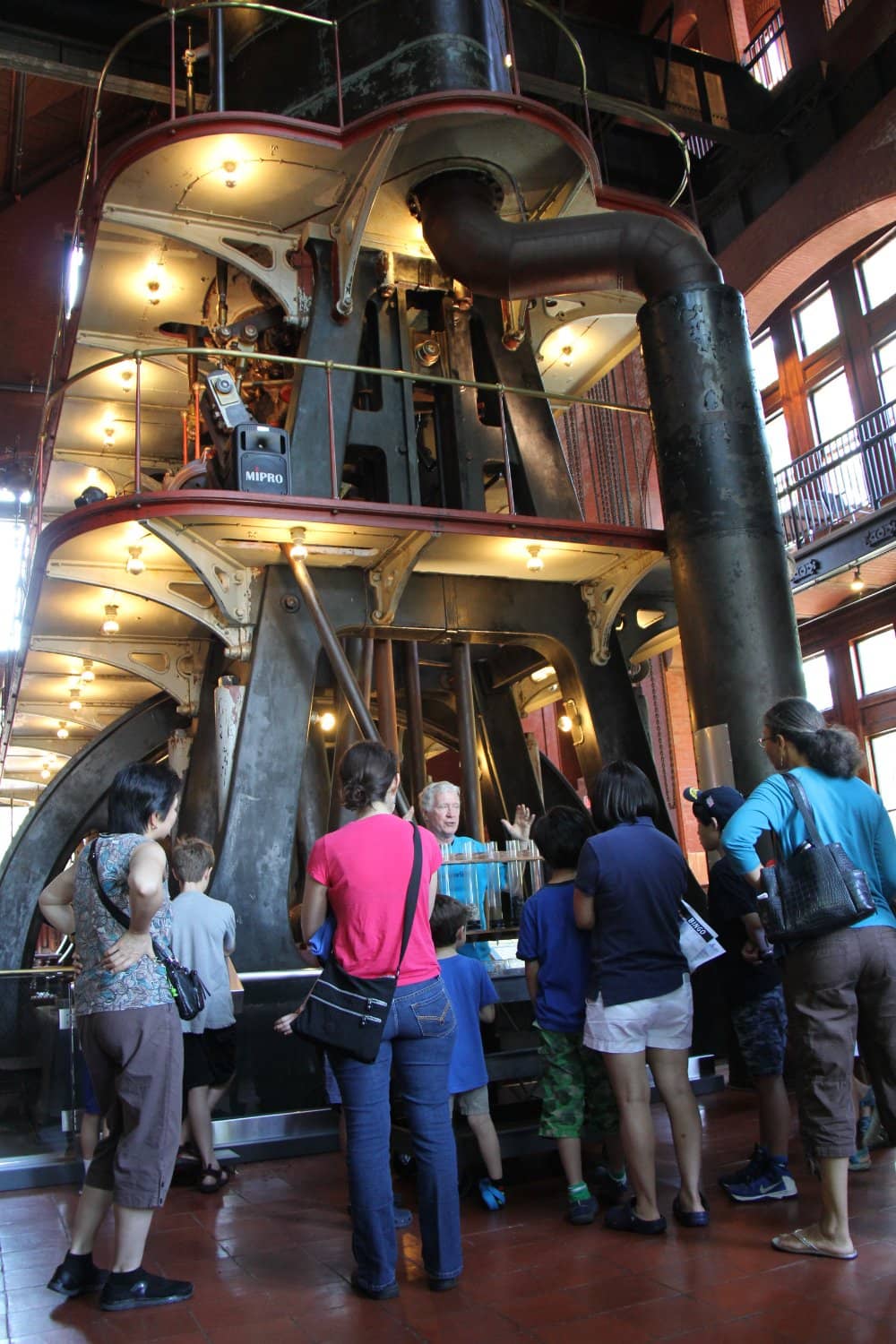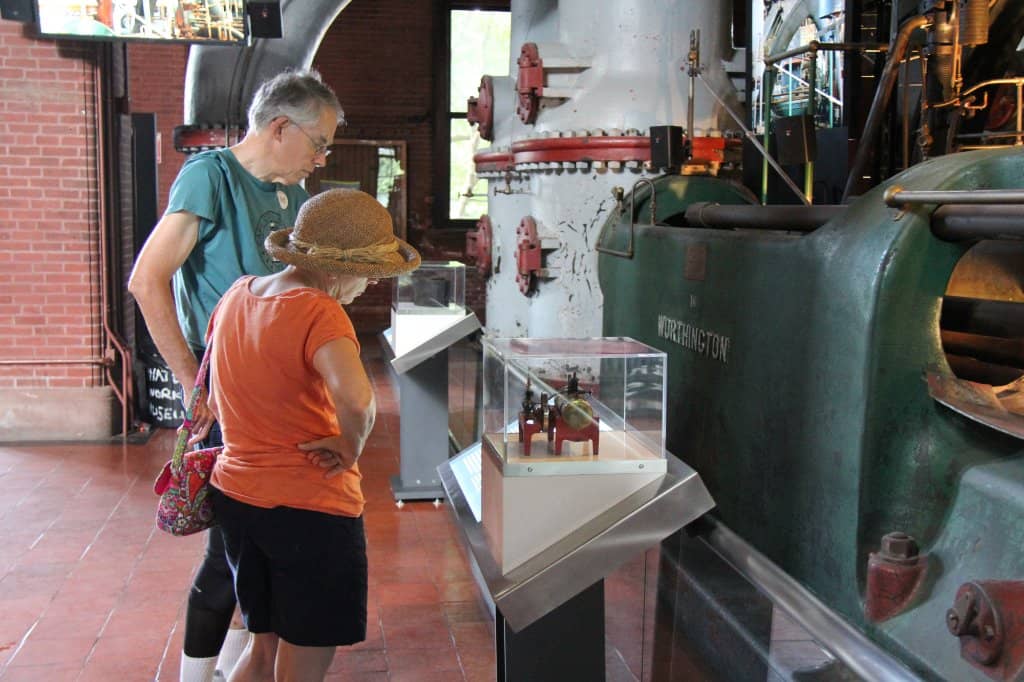
Louisville WaterWorks Museum
Explore Louisville's water history at the beautifully restored Pumping Station No. 1, featuring impressive engines and engaging exhibits.

Highlights
Must-see attractions

Social
From TikTok & Reddit
Best Time
Open hours for visitors

Louisville WaterWorks Museum
Best Time
Open hours for visitors

Highlights
Must-see attractions
Explore Louisville's water history at the beautifully restored Pumping Station No. 1, featuring impressive engines and engaging exhibits.
"Avoid online fees by buying tickets in person; watch the videos and take the tour!"

💳 Buy Tickets On-Site
Avoid online fees by purchasing your admission directly at the museum. Credit/debit cards accepted.
🎬 Watch the Mini-Theater
Don't skip the short, informative videos in the Fuller Theater for great historical context.

Highlights
Discover the most iconic attractions and experiences

Historic Pumping Station No. 1
Zorn Avenue, Louisville, KY
Explore the beautifully restored 1858-1860 building that houses the museum, offering a glimpse into early industrial architecture.

Blackstone Engine
WaterWorks Museum
Witness a volunteer engineer restart this impressive, restored engine – a testament to the museum's dedication to preserving industrial heritage.

Fuller Theater Videos
WaterWorks Museum
Watch five short, informative videos that provide fascinating context and 'gee whiz' facts about Louisville's water history.
Plans like a pro.
Thinks like you
Planning Your Visit
Skip the Online Fee
Immerse Yourself in History
Best Times
Insider Tips
from TikTok, Instagram & Reddit
💳 Buy Tickets On-Site
Avoid online fees by purchasing your admission directly at the museum. Credit/debit cards accepted.
🎬 Watch the Mini-Theater
Don't skip the short, informative videos in the Fuller Theater for great historical context.
🚶♀️ Take the Guided Tour
Enhance your visit with a guided tour for deeper insights into the exhibits and history.
💧 Learn About Louisville Water
Discover the fascinating history behind the city's best drinking water and its infrastructure.
Tips
from all over the internet
💳 Buy Tickets On-Site
Avoid online fees by purchasing your admission directly at the museum. Credit/debit cards accepted.
🎬 Watch the Mini-Theater
Don't skip the short, informative videos in the Fuller Theater for great historical context.
🚶♀️ Take the Guided Tour
Enhance your visit with a guided tour for deeper insights into the exhibits and history.
💧 Learn About Louisville Water
Discover the fascinating history behind the city's best drinking water and its infrastructure.
🏛️ Explore Historic Architecture
Admire the beautifully restored Pumping Station No. 1, a piece of Louisville's industrial past.
What Travellers Say
Reviews Summary
Visitors praise the Louisville WaterWorks Museum for its fascinating historical exhibits, particularly the impressive restored engines and the beautifully preserved Pumping Station No. 1. The informative videos and guided tours are highly recommended for a deeper understanding of Louisville's water history. Some visitors note that tickets are credit/debit card only and advise against online purchases to save on fees.
"Do NOT buy tickets in advance online because of the additional online fee. Buy a ticket when you get there (credit/debit card only, no cash) and avoid the online fee. Watch the short videos in their mini-theater (Fuller Theater?). All five videos are interesting. Take the tour."
JR
""
Sundeep Dronawat
""
blake Blake
What People Like
What People Dislike
Frequently Asked Questions
🚇 🗺️ Getting There
The Louisville WaterWorks Museum is located at 3005 River Road in Louisville, Kentucky, overlooking the Ohio River. It's part of the historic Pumping Station No. 1. Visitors can typically drive and find parking nearby. Check their official website for the most current directions and any specific parking instructions.
Information on public transport accessibility can vary. It's best to check local Louisville transit schedules or the museum's website for the most up-to-date information on bus routes or other public transportation options that may serve the River Road area.
The museum has specific open dates and hours, often on Sundays. It's crucial to check the official Louisville Water Tower website for the most current schedule, as hours can change seasonally or for special events.
🎫 🎫 Tickets & Entry
Admission fees are typically modest, often around $3-5 per person, with guided tours potentially included or at a small additional cost. It's highly recommended to buy tickets in person to avoid extra online fees.
While online ticket purchasing might be an option, it's strongly advised against due to additional fees. Purchasing your ticket directly at the museum is the most cost-effective method.
The museum primarily accepts credit and debit cards for ticket purchases. It's best to confirm this directly with the museum, but be prepared to use a card as cash may not be accepted.
Yes, the museum participates in programs like the Fund for the Arts Cultural Pass, which offers free access on specific dates during the summer. Keep an eye out for such community initiatives.
🎫 🧭 Onsite Experience
You can explore the historic Pumping Station No. 1, view impressive restored engines like the Blackstone engine, and watch informative videos in the Fuller Theater. Guided tours offer deeper historical context.
Yes, guided tours are often available and highly recommended for a comprehensive understanding of the museum's exhibits and history. These tours can last around 45 minutes.
The museum highlights fascinating facts about the engineering, history, and quality of Louisville's drinking water, showcasing its journey from the Ohio River to your tap.
The museum offers an educational experience that can be engaging for children, especially with its historical machinery and 'gee whiz' facts. Field trips for homeschool groups are common.
Generally, photography for personal use is allowed inside museums. However, it's always a good practice to check for any specific signage or ask staff if flash photography or tripods are permitted.
📸 📸 Photography
The beautifully restored interior of Pumping Station No. 1, the impressive Blackstone engine, and the exterior architecture of the water tower itself offer great photographic opportunities.
While not explicitly stated, it's common for museums to restrict flash photography to protect delicate exhibits. It's advisable to use natural light or check for specific museum policies upon arrival.
Yes, photographing the restored engines, like the Blackstone engine, is a highlight for many visitors and is generally permitted for personal use.
For Different Travelers
Tailored advice for your travel style
👨👩👧 Families with Kids
🏛️ History Buffs
💰 Budget Travelers
Deep Dives
In-depth insights and expert knowledge
The Historic Pumping Station No. 1
Visitors can explore the various levels of the pumping station, learning about the complex machinery that was once vital to the city's water supply. The preservation efforts have been extensive, ensuring that the building's historical integrity is maintained while making it accessible and engaging for the public. The museum's commitment to showcasing this landmark is a key part of its appeal.
This historic site is not just a museum but a testament to the vision of engineers like Theodore Scowden, who envisioned it as more than just a utility, but a community hub. The ongoing preservation and updates, including acoustic panel additions, ensure its continued relevance and appeal.
Engines and Engineering Marvels
These engines are not just static displays; they represent the core function of the Pumping Station and the innovation required to supply a growing city with water. The museum's dedication to recovering, restoring, and displaying these pieces of engineering history is a significant aspect of its educational mission. Visitors often express awe at the scale and complexity of these machines.
Learning about the mechanics and historical context of these engines offers a unique insight into the development of urban infrastructure. It's a chance to appreciate the 'gee whiz' facts about how things worked and the skilled labor involved in their operation and maintenance.






Social
from TikTok, Instagram & Reddit